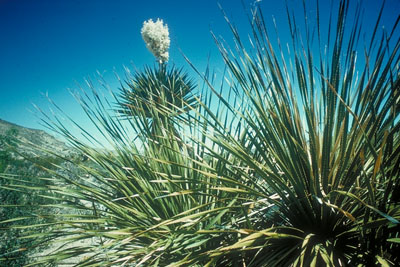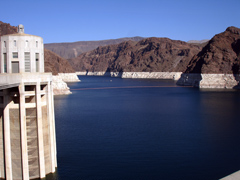
It’s simple: Water essential for parks
Fresh water is one of the most vital nutrients necessary to sustain life.
This does not just apply to human life but just about every living object needs fresh water to survive. For example, the Grand Canyon is formed by the flow of the Colorado River and this same river provides water to seven states: Arizona, California, Colorado, Nevada, New Mexico, Utah and Wyoming.
Throughout the United States, there is a growing crisis involving water in the national parks. Some parks, such as Everglades National Park in South Florida, have problems with the quality of the water. Other parks, like Big Bend National Park in West Texas, have problems with the amount of water in their region.
These protected natural areas that are home to wildlife and lush scenery are in danger due to these water issues.
 |
Water is the essence of the “river of grass” of Everglades National Park in South Florida (Photo courtesy of the National Park Service). |
In South Florida, Everglades National Park has been experiencing severe water issues for decades. A dry season extended drought, the second in just six years, is the latest of a long list of water-related problems that faced the park in mid 2007.
“The Everglades are extremely important to Florida’s ecosystem,” said Dr. Nick Aumen, an aquatic ecologist with Everglades National Park. “It is a natural sponge for excess rainwater and a natural cleansing filter for water.”
Phosphorus, mercury and other pollutants have been damaging the quality of water in the Everglades. These dangerous pollutants are killing the wildlife and native foliage while promoting the growth of foreign plant life.
The Everglades is a very delicate ecosystem that can be devastated by the slightest change— such as a severe wet hurricane or a period of drought— from the norm. The pollutants that are being pumped into the “River of Grass” are destroying its environment.
| Desert grass at Big Bend National Park in Texas is at risk when there is not sufficient rain (Photo courtesy of the National Park Service). |  |
These pollutants have been entering the Everglades through pumps that remove water from the sugarcane fields and place it in the nearby marshes.
The South Florida Water Management District (SFWMD) does not dispute that the water it is pumping into the Everglades is polluted, but it contends that there is nowhere else to put it.
The SFWMD claims that the water is pumped like this to prevent flooding in the newly developed areas that creep further west into the Everglades. The area north of Tamiami Trail in metropolitan Miami is kept at an unnaturally high water level while the area south of it is kept at an unnaturally low water level.
Conservationists claim that if water were allowed to flow naturally, both the northern and southern Everglades would benefit and a natural flood protection would occur because the water would be flowing naturally.
As a result of a U.S. Supreme Court decision in 2004 that sided with the Miccosukee Tribe of Indians and Friends of the Everglades, a conservationist group founded by the legendary environmentalist Marjory Stoneman Douglas, there is an $8.4 billion project being implemented to restore the natural flow of water through the Everglades during the next 30 years.
“If we can find ways to bring more water to the area it can assist with the droughts,” said Aumen.
| Everglades wading birds must have shallow water in order to feed (Photo courtesy of Rodney Cammauf and the National Park Service). |  |
Another major cause of the current situation in the Everglades is the westward development that has taken place over the past two decades in South Florida. This development into the outskirts of the Everglades has changed the fragile ecosystem making it much more difficult to recover from droughts.
“Human activity has altered the ability of the ecosystem to adapt to the variations that occur in the wet and dry seasons,” said Aumen.
During droughts, wildlife and foliage die and the wildlife that survive are often forced to migrate into canals and other bodies of water in suburban areas where they are not wanted.
“Alligators are forced to move into suburban areas due to lack of water and wading birds that require shallow standing water in order to feed are forced to find a new habitat or die,” said Aumen.
The Everglades and neighboring Big Cypress National Preserve to the north are both severely impacted by long periods of dryness. According to the U.S. Drought Monitor, South Florida is in an abnormally dry stage of drought and has been for the past year.
“One of the worst things that could happen is the water level recedes below the peat and muck fires destroy the area,” said Aumen. “Fires and drought will do long term damage and some areas can be damaged irreparably.”
There are ways for the citizens to help alleviate these water issues.
“Conserve water during the wet season to alleviate the water shortage during the dry season,” said Aumen.
In the Western states, the water problem is the opposite to that of the normal conditions for the Everglades.
 |
Everglades alligators are forced to move into suburban areas in search of water in South Florida (Photo courtesy of Rodney Cammauf and the National Park Service). |
In this region of the United States, there is not enough water.
Big Bend National Park in West Texas is one of many parks affected by a water shortage. The Rio Grande River flows with less water than it did 20 years ago and many reliable springs in the area no longer flow or only flow occasionally.
Wildlife, such as hogs and other livestock, trample the areas where the springs are located and this disturbs the delicate balance necessary to keep them flowing. Exotic foliage, such as saltcedar, invades the springs, soak up all the water and turn what was once fertile soil into salt beds.
Efforts are being made to re-establish the natural conditions at Big Bend National Park through controlling the exotic foliage and animals that are destroying the land and invigorating the little desert grass that is native to the region in the hopes that it will one day flourish again.
 |
Florida panthers have been found dead with abnormally high levels of mercury from the polluted water of the Everglades of South Florida (Photo courtesy of Rodney Cammauf and the National Park Service). |
The Colorado River runs throughout the mountain region and southwest to provide 25 million people with water and generate much of their power supply. The U.S. Dept. of the Interior’s Bureau of Reclamation manages the dams, power plants, reservoirs and canal systems that regulate and distribute the waters of the Colorado River.
Some of these major structures include the Lake Powell reservoir at Glen Canyon National Recreation Area behind Glen Canyon Dam and the Lake Mead National Recreation Area reservoir behind Hoover Dam.
Low Colorado River water levels also impact the Grand Canyon National Park use and its natural ability to clean itself. Further evidence can be seen at nearby Lake Mead National Recreation Area, created by Boulder Dam on the Colorado. Low lake levels there today are dramatic.
The U.S. Bureau of Reclamation focuses on fulfilling its water delivery obligations, water conservation and water recycling and reuse. Unfortunately, there is still a lack of water in the region.
| Lower than normal water levels on Lake Mead at the Lake Mead National Recreation Area are easily visible with the bleached white coloring along the shoreline (Photo by Diana Offutt). |  |
The Colorado River Compact that was put into effect in 1922 allocates a certain amount of water to each state in the Colorado River Basin. The problem is the allocations do not provide some states with enough water while other states do not use all of the water that they are entitled to.
States are now working to find alternatives to conserve their water allocation.
Leonardo da Vinci said “water is the driving force of all nature.” Without water, these protected natural areas will suffer tremendously and possibly cease to exist.

Comments are Closed